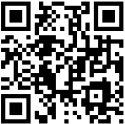Win8 Files
Windows 8 vs. Previous Windows
Windows 8 is unlike any version of Windows that has come before. It's a version that will run on servers, workstations, laptops, netbooks, tablets and smart phones. It has been designed so they all look the same. But be careful. They are NOT the same.
There is a dividing line between the servers, workstations, laptops, netbooks and some tablets on the one hand and smart phones and some tablets on the other. The difference is that smart phones and some tablets (Windows RT tablets) won't run Windows at all. They will run a phone system that LOOKS a lot like Windows 8, will contain some elements of Windows 8, but won't be Windows at all. This means that you will not be able to install your standard Windows programs on phones and Windows RT tablets. There is no Windows to install them on. Some recent printers will allow Windows 8 phones and Windows RT tablets to print to them and some won't -- and never will.
If you are thinking about buying a Windows 8 tablet, be aware that there are two kinds: Windows RT (WinRT) which runs on ARM processors, has a long battery life but is limited in capabilities and Windows 8 (Win8) which has lower battery life but whose processors are powerful enough to run Windows. They will come with real Windows. You can buy retail copies of Win8 and install or upgrade your desktop and laptop, but WinRT is married to the device you purchase.
WinRT is a phone operating system. It is careful about battery life. It won't automatically go out to the Internet to get things because most cell phone data plans charge large amounts for going over your allotment. On the other hand, Windows 8 is pretty much just Windows 7 with a new phone interface. This allows all the devices to look and work pretty much identically. If you have a Windows RT phone and a Windows RT tablet, you are going to want Windows 8 on your desktop. It's much easier to get used to only one operating system than to keep switching.
Basically, the idea is that either you have a real computer or you have a phone or phone-like device. Phones don't join networks, don't run resource-hogging applications, aren't used to create documents prolifically (you can edit or throw something together in a pinch, but you won't write a novel on one), and when they are using a cellular connection are expensive to use online.
If you think this is confusing, it's a whole lot clearer than anything Microsoft has published.
But wait, there's more confusion. Win8 has a split personality. The startup screen shows all of your installed apps (the small programs that are designed for phones but can run on other devices) and programs (the traditional Windows programs). If you click on a Windows application, your view immediately switches to the familiar Windows 7-looking desktop. Yes, in Win8 you don't start on the desktop, you start on what they were calling the Metro interface but now it's the Modern interface. WinRT apps can be obtained only from the Microsoft app store. Some are free, some cost money. But you have to be careful. Some apps won't work on all devices. Apps for phones might not work on laptops and apps for laptops won't work on phones. Read before you try to install.
Watch out for similarly-named apps. WinRT does have a SkyDrive app, but it doesn't sync. You have to manually download and upload files using the app. There is a SkyDrive application that does sync, but it only works on Win8. The reason the SkyDrive app doesn't sync is that it could generate some really horrific phone bills if the connection were cellular.
Some mouse gestures and keystrokes only work in Live Apps -- apps that contain Internet data.
There are a couple of other gotchas. WinRT comes with Office Home & Student 2013 RT, which includes Word, Excel, PowerPoint and OneNote. It doesn't include Outlook and there's no way to get Outlook onto WinRT because you can't install programs in WinRT. Ditto for Live Mail, Thunderbird, etc. It does have a built-in app to sync with Gmail, Exchange, Hotmail and other IMAP mail servers, but it won't do plain, old POP3. Office is included and is free for personal use. You need to buy a separate Office license if you use it for business. Clearly, Microsoft intends WinRT tablets solely for home users.
Basically, all you need to remember is that WinRT is a competitor to iPad and Win8 on a tablet is just a stripped down laptop.

